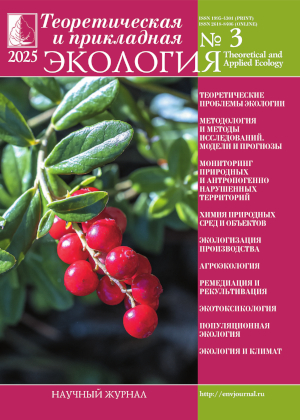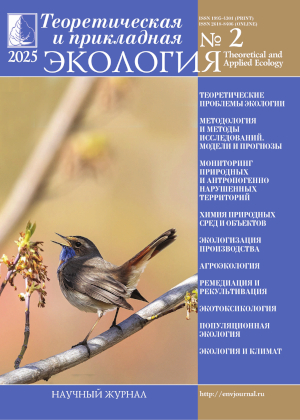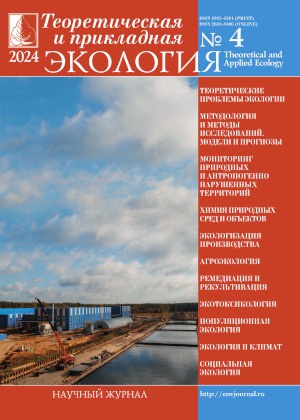 ISSN 1995-4301
ISSN 1995-4301(Print)
ISSN 2618-8406
(Online)
Online version of the journal
|
Projection of carbon sequestration in riparian reforestation |
||||
| D.G. Zamolodchikov, V.V. Kaganov, O.N. Lipka | ||||
| Section: Population ecology |
||||
| The projection of carbon effects from partial reforestation of delta of river Ili (Kazakhstan) in frame of project on restoration of riparian forests and reintroduction of Caspian tiger is developed. Typical values of carbon sequestration by biomass of stands are calculated for tree species, native at studied area (Populus diversifolia Schrenk, Elaeagnus oxycarpa Schltdl., Salix songarica Andersson, S. wilhelmsiana M. Bieb.). The P. diversivolia stands are subdivided to good and normal conditions, S. songarica and S. wilhelmsiana are combined to Salix. sp. group. The peculiarities of growth of carbon in biomass differ in high extent between different tree species. The rate of carbon accumulation during starting 5 years after planting is close for P. diversifolia at good conditions (0.71 tC/ (ha • year)) and E. oxycarpa (0.69 tC/ (ha • year)). The same values are lower for P. diversifolia at normal conditions (0.32 tC/ (ha • year)) and Salix sp. (0.06 tC/ (ha • year)). P. diversifolia at good conditions after 30 years has 54.05 t C/ha in biomass, at normal conditions – 43.71 тС/ha, then Salix sp. (31.10 t C/ha) and E. oxycarpa (12.44 t C/ha) follow. The carbon sequestration is projected for 30 years with reforestation, performed at area 200 thous. of ha. This area is subdivided by tree species as follow: P. diversifolia at good conditions – 15%; P. diversifolia at normal conditions – 15%; E. oxycarpa – 60%; Salix sp. – 10%. The total area will be completely planted during 12 years with equal annual rates 8.3%, correspondent to 16677 ha per years. The annual sequestration is increased from 2 thous. t C/year at first year of project to maximal 264 thous. t C/year at 16th year of project rolling, then is decreased to 101 thous. tC/year at 30th year. Total accumulation of carbon by stand biomass during 30 years is 4.63 mln. tC (16.98 mln. t CO2). The carbon accumulation is important component of ecosystem services, which can be restored due to the project implementation. | ||||
| Keywords: reforestation, riparian forests, phytomass, carbon sequestration, projection. |
||||
| Link | ||||
    |
||||
| Article published in number 4 for 2019 DOI: 10.25750/1995-4301-2019-4-095-101 |
||||
|
|
36, Moskovskya street, Kirov, 610000, Editorial Board "Theoretical and Applied Ecology." Phone/fax: (8332) 37-02-77 e-mail: envjournal@vyatsu.ru The journal was founded in 2007 |
||||||




 Select viewing options
Select viewing options